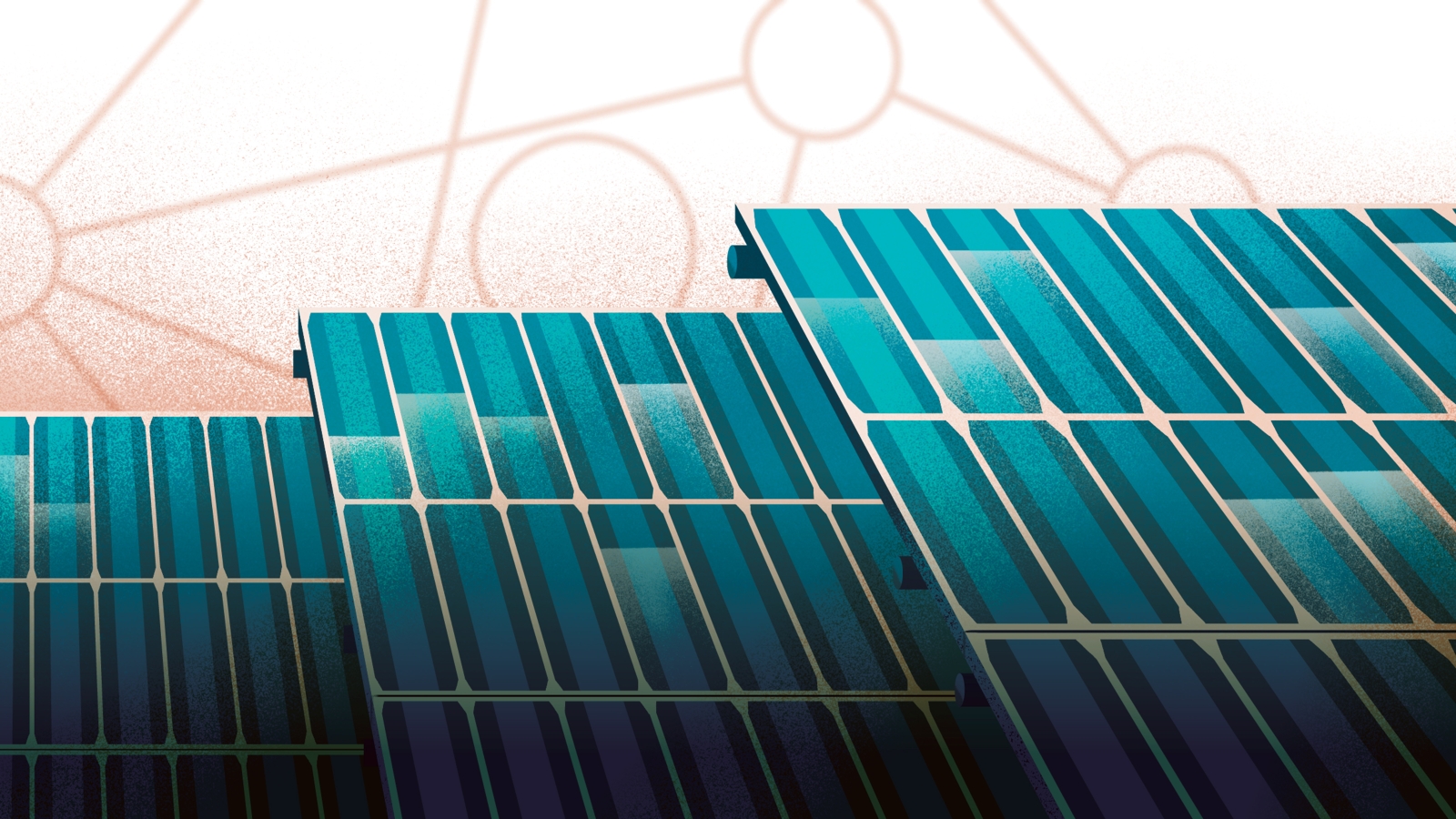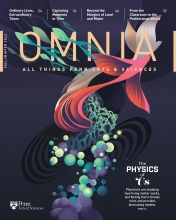Marrying Models With Experiments to Build More Efficient Solar Cells
Andrew M. Rappe, Blanchard Professor of Chemistry, and postdoctoral researcher Arvin Kakekhani lend their expertise to a study on solar cell efficiency.

In a single day, enough sunlight strikes Earth to power the world for an entire year. While the cost of solar energy has decreased dramatically, current silicon-based solar cells are expensive and energy-intensive to manufacture, prompting researchers to look for alternatives. One of the prime contenders for the next generation of this renewable energy is called perovskite solar cells. These synthetic materials are cheaper and require less energy to produce, but fall behind many silicon-based cells in terms of their stability and efficiency.
Now, a paper published in Nature Communications from the groups of Andrew M. Rappe, Blanchard Professor of Chemistry at Penn, and Yueh-Lin Loo of Princeton University, gives insight into how the molecular make-up of certain perovskites might affect their efficiency and offers a path forward to better solar cells using a simple metric.
“The world currently needs more efficient and cost-effective photovoltaic cells, and 3D hybrid perovskite PVs have taken the world by storm,” says Rappe, who also co-directs Penn’s undergraduate Vagelos Integrated Program in Energy Research. “But they are irreversibly damaged by water, which is a showstopper for practical applications.”
In the study, researchers investigated a certain class of perovskites called 2D hybrid perovskites. Initially, the Princeton team prepared a set of 2D perovskites with different organic molecules, studying how those molecules affected the inorganic layer’s alignment and the solar cell efficiency. They noticed that the type of molecule influenced the structure and energy efficiency of the solar cells but didn’t exactly know why or how. They needed an atomistic insight to complement the experimental findings and hypotheses, so they reached out to Rappe and Arvin Kakekhani, then a postdoc in the Rappe group, both experts in using computers to model chemical interactions.
From the current quantum mechanical calculations and charge modeling work, Kakekhani and Rappe found that the molecules in the organic layer could interact with each other, lining up in pairs or in zigzags between the metal-based layers of the perovskites. When forming these pairs or zigzags, the organic molecules interacted less with the metal-based layer, giving the layer space to align properly and improving the performance of the resulting solar cells.
But Kakekhani wondered whether he could find a way to capture this phenomenon in a simple value that described the interaction between the organic and inorganic layers. After testing various models, he landed on one that described how far away the interactions in the organic layer pulled the positive charge from the inorganic layer. Then he tested it to see whether it might predict how well the inorganic layer would align and how well the solar cells might perform.
Kakekhani predicted the real-life trends with surprisingly high fidelity. In mathematical terms, his model gives a coefficient of determination of >0.95, almost a perfect linear correlation. Because this metric only needs a computer to predict solar cell performance, it could allow scientists to choose which molecules might work best in perovskites before stepping into the lab, helping researchers narrow their efforts to only the most promising candidates.
“There are literally millions of molecules that people could try. But it’s not so easy to make millions of solar cells,” says Rappe. “This gives people a simple scoring rule, where they could analyze whether a molecule they’re considering is likely to enhance the productivity of the solar cell.”
In the future, Rappe says these insights might also help with perovskite LEDs. If these perovskites can turn light into energy efficiently, they should be able to do something similar when turning energy to light. More generally, he says, “This study shows that we are learning how to assemble materials, atom by atom and molecule by molecule, that can solve the world’s most pressing energy challenges.”



